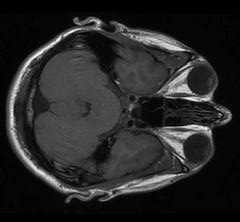ALS Lyme?
Here is a post I recently made to the ALS group on Yahoo, but I could not post it to braintalk, which has trouble with my login:
ALS Lyme?
I was diagnosed with ALS on January 13, 2004. At the time, my blood test for Lyme disease was in the 'indeterminate' range -- halfway between negative and positive. A year later it was still indeterminate. These tests were done by Quest, a reputable laboratory. The experts who confirmed my diagnosis also tested me for various obscure, rare conditions, but reluctantly settled on ALS as a diagnosis. In my view, the experts were negligently incurious about the Lyme test results. These days, I walk with difficulty and my speech is slurred. I have lost a lot of functionality. However, I was still curious about the 'indeterminate' Lyme result, having heard that Lyme is a great imitator. With the help of various people on the internet, I located another lab, IgeneX, and had my blood tested for Lyme by them. IgeneX is controversial. They use a different methodology for analyzing the test results, based on published, peer-reviewed science -- but not generally accepted by doctors or insurance companies. IgeneX has even been investigated by the state of New York and, I think, the federal government, for improper conduct. In casual conversation, an expert at my ALS clinic had warned me that IgeneX is totally disreputable. My results from IgeneX were positive for Lyme disease. After quite a bit of searching, I managed, with the help of The International Lyme and Associated Diseases Society (http://www.ilads.org) to locate a 'Lyme-literate' doctor. He put me on a twice-daily dose of 100 mg oral minocycline, with the plan of getting me on two grams of daily IV ceftriaxone (brand name: Rocephin), shifting after 5 weeks to twice-daily infusions four days a week with three days off. The infusions might continue for 15 months, depending on my responsiveness. This is tremendously expensive, and you can see why insurance companies might not look favorably on it. The drug is no cure for ALS. Certainly it did not save Dee Chiplock, now deceased from familial (genetic) ALS, despite her daily infusions of four grams or more. It may, however, have prolonged her life, since she did last longer after diagnosis than other members of her family tree who were afflicted. Since January 10, 2005, I have been testing the grip strength in my hands daily, and recording the data in a spreadsheet. I use an instrument called a hand dynamometer. There have been some periods where I did not collect this data, but generally the graphs have progressed downward in an inexorable trend. I had a left grip of 52 pounds in February, 2005, and by January 2006 it was at 19 pounds. My right side, which is less impaired than my left, declined from 100 pounds down to 65 in the same period. I was curious to see what effect, if any, the ceftriaxone would have on my grip strength. I began taking the minocycline orally while I scheduled with a vascular surgeon to place a "port" for IV drugs on my chest near the shoulder. But in the two weeks before the port installation, I began to notice a new trend in the graph of my grip strength. It was leveling off, perhaps even climbing, apparently as a result of the oral minocycline. By the time I had the IV port installed on March 2, the trend was clearly upward. Between January 19 and March 8, my left grip has improved from 19 pounds to 30 pounds, and my right grip (on the less-impaired side) from 65 pounds to 75 pounds. In my view, this result supports the notion that I may have ALS-like symptoms brought on by Lyme disease. I do not know what the future holds for me, whether I may recover from my symptoms and begin to walk and talk normally again, or whether I will suffer some kind of complications, or relapse. I don't claim that all ALS is Lyme, or even to know what causes my disability. But here is my message to those of you with ALS: Get a blood test for Lyme. If the test results are 'indeterminate' or even show a positive result for just a few markers, find a 'Lyme-literate' doctor and begin moderate, cautious treatment for possible Lyme.
Left grip is 25 pounds (24, 25, 25), right grip is 70 pounds (70, 66, 62), inhale volume is 3550 mL.


<< Home